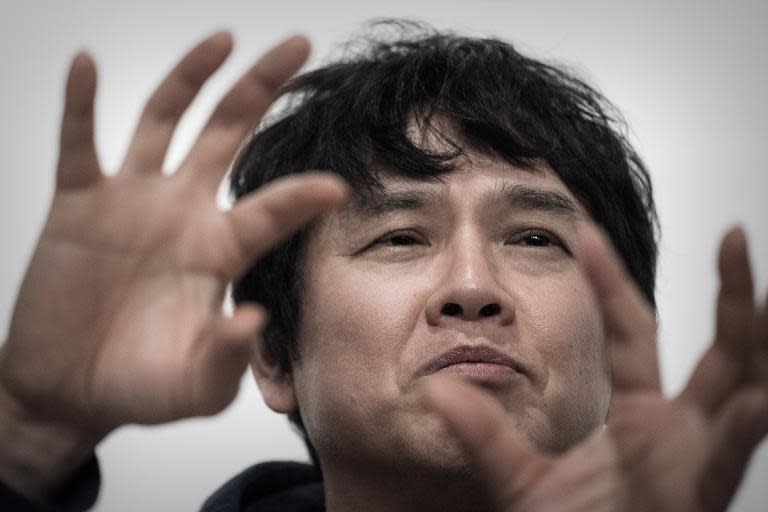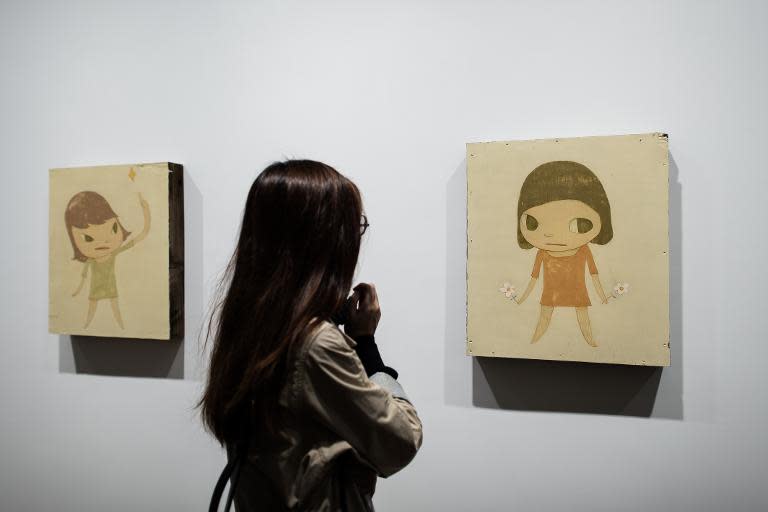Disaster, reindeer and Spock ears: the world of Japanese artist Nara
When the quake-tsunami disaster devastated Japan's northeast in March 2011, killing thousands and sparking a nuclear crisis that is still wreaking misery today, it also swept away the inspiration of one of Japan's most famous contemporary artists, Yoshitomo Nara. Known best for his deceptively simple, almost cartoon-like canvasses featuring sometimes sinister images of young girls and animals, the 55-year-old was so devastated by the destruction wreaked on his home region he found himself unable to paint. Four years later, in his largest show in Asia outside Japan at Hong Kong's Art Basel exhibition, his latest works focus on death and the impermanence of life. The title piece, "Life is Only One," features his trademark innocent young girl – this time holding a skull. Arriving in Hong Kong to open the show, Nara talked to AFP about the impact of the disaster on Japan's art scene, his plans to visit Lapland and a pair of Spock ears given to him by the late Star Trek actor Leonard Nimoy. Q: How did the Fukushima disaster affect you on a personal level? "It made me feel helpless. I live 100 kilometres (60 miles) from the Fukushima power plant and I was born in Hirosaki, Aomori prefecture (north of the disaster zone), where my mother still lives. People told me to run away to escape from the place but I preferred to stay there to try to help. But I felt helpless as an artist, and as someone from the northeast area, like my art can't really do anything for people. "For a while I couldn't really focus on painting. In about six months I did one painting, when I would normally do more than 10. Instead, I started to make sculptures. I wanted to use my hands to touch something and make a mark. I went back to Aichi (Prefectural University of Fine Arts and Music in Nagakute, his alma mater) where I felt more comfortable: it was a kind of rehabilitation." Q: How did the disaster impact Japanese art more broadly? "Part of Japan's history was lost. There was a very famous place for making traditional Japanese ceramics where everything was destroyed. All the kilns were broken – very, very old traditional kilns that no one will make again – and ceramics I had made myself were all destroyed. There were lots of museums that had very good collections of traditional works which were destroyed as well. "But it's not just art that was lost: a lot of people lost the images of their families. If you have lost all of your albums and videos so you can no longer see your grandpa or grandma, or your parents – compared with the loss of culture or art, it's more sad to lose something like that." Q: You have said before you don't like social media, but you use it a lot. What do you think of it? "For me, social media has limitations. On it I only show the part I want to show people – there are so many things I don't show. Maybe you think I'm a very open, very cool person, but I'm not! So many people want to look at me, to know me, on social media I can positively choose what I want to show." Q: Do you have a favourite among your works? "There's not a particular artwork that I prefer, it's more about what I went through when I painted that work. Artworks don't just come from one thing or one particular incident, it's like layers of the past. (In my early works) I put lots of different elements in the painting, which I thought was more clear. Now I paint only one thing and it can explain everything." Q: What do you plan to do next? "Next I want to go on a trip to paint. My goal is not just to be an artist but to travel, and to continue to travel as an artist. I'd like to go to Lapland. I like the reindeer and I come from the north, so I like the landscape: full of snow, white." Q: You knew the late Leonard Nimoy and he once gave you some Spock ears. What will you do with them? "Just pray. (Leonard) was a very kindly nice person. He also had a childish heart: when he invited me to his house for dinner you could see toy trains on tracks running along the walls. It is a sad loss but after the disaster, and my father's death, I realised that everyone will die and I think Leonard led a perfect life. I also think I will try to do my best before I die. I am 55 years old – I have already finished half of the marathon – but I'm saving some energy for a powerful last spurt."





